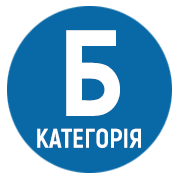APPLICATION OF QR-GENERATOR AS AN INNOVATIVE MEANS OF FORMING EDUCATIONAL CONTENT FOR FUTURE SPECIALISTS IN TECHNOLOGICAL EDUCATION
DOI:
https://doi.org/10.25128/2415-3605.23.1.32Keywords:
labor training, technological education, innovative teaching aids, QR-generatorAbstract
The peculiarities of the implementation of the educational process in secondary and higher education institutions under martial law are characterized. The need to adapt educational content to modern realities is indicated. The relevance of the use of innovative means of training future specialists in technological education, as well as high school students in the lessons of labor training (technology) is substantiated. The potential possibilities of the QR-generator as an innovative means of educational activity of participants in the educational process of secondary and higher education institutions are outlined. The methodical aspects of its application in the process of creating a teacher’s (lecturer’s) V-card, as well as the project activities of future technological education specialists are determined. An experimental study of the effectiveness of the use of the QR-generator in the educational process of secondary and higher education institutions was conducted. The conclusions from the conducted research are substantiated: the use of the QR code generator in educational technological activities increases the interest of pupils and students in learning the educational material. It will also allow to increase the level of prestige of educational subjects of labor training and technologies in secondary education institutions, as well as increase the effectiveness of the educational process, mastering the strategy of project activity, independent choice of the mode of educational activity, organizational forms and methods of education. The option of replacing illustrative and explanatory teaching methods with a variety of different types of educational activities, focused on the active use of information and communication technologies as tools of cognition and self-cognition, tools of research, construction, measurement and formalization of knowledge is proposed.
References
Вища освіта України. URL: http://www.euroosvita.net/index.php/?category=1&id=3442
Державний стандарт загальної середньої освіти: затверджено Постановою Кабінету Міністрів України від 16.11.2000 р. № 1717. Освіта України. 2000. С. 117–118.
Гаврищак Г. Р. Інноваційні графічні технології засобами програмних середовищ. Актуальні проблеми та перспективи технологічної і професійної освіти: матеріали VІ-ї Всеукраїнської науково-практичної інтернет-конференції (м. Тернопіль, 24–25 травня 2021 р.). Тернопіль: ТНПУ ім. В. Гнатюка, 2021. С. 16–17. URL: http://dspace.tnpu.edu.ua/handle/123456789/21948
Гаврищак Г. Р., Уруський А. В. Формування графічної компетентності здобувачів вищої освіти засобами комп’ютерно-орієнтованих технологій. Наукові записки Тернопільського національного педагогічного університету ім. В. Гнатюка. Серія. Педагогіка. 2021. № 1. C. 6–13. URL: http://dspace.tnpu.edu.ua/handle/123456789/19351
Ковальчук В., Ольшанський Л. Професійна підготовка на засадах компетентнісного підходу. Молодь і ринок. 2021. № 11–12. С. 6–10.
Компетентнісний підхід у сучасній освіті: світовий досвід та українські перспективи: бібліотека з освітньої політики / за заг. ред. О. В. Овчарук. Київ: К.І.С., 2018. 112 с.
Локшина О. І. Становлення «компетентнісної» ідеї в європейській освіті: матеріали. Реалізація європейського досвіду компетентнісного підходу у вищій школі України. Київ: Педагогічна думка, 2019. С. 21–30.
Сокотов Ю., Сорока Т., Уруський А., Гаврищак Г.Р. Особливості підготовки майбутніх учителів технологій засобами програми PRO 100 Проблеми підготовки сучасного вчителя. 2021. Вип. 2 (24). С. 133–144. URL: http://psv.udpu.edu.ua/article/view/244221
Уруський А. В., Гаврищак Г. Р. Диференціація завдань при формуванні графічної компетентності здобувачів вищої освіти комп’ютерно-орієнтованими засобами навчання. Освітологічний дискурс: наукове електронне фахове видання. Київ, 2022. № 1 (36). С. 141–160. DOI: https://doi.org/10.28925/2312-5829.2022.18






